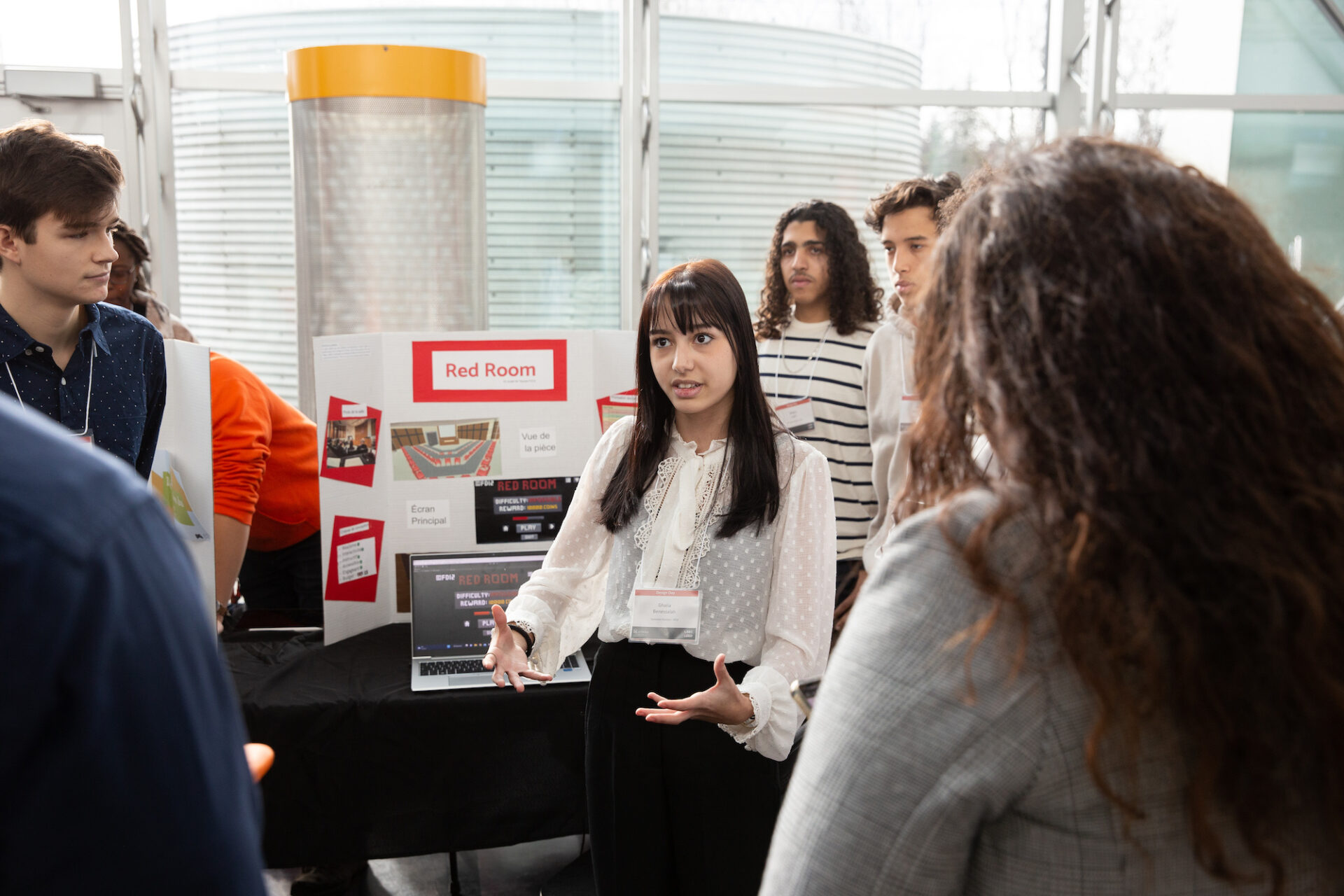With disruption and innovation being the rule rather than exception when it comes to launching a new product or being a market leader, businesses now-a-days are facing more competition than ever.
That’s why it’s a good thing uOttawa engineering professor Dr. Hanan Anis was ahead of the curve when she founded Design Day seven years ago as a way of connecting businesses with the next generation of out-of-the-box thinkers.
A modest beginning becomes a thriving ecosystem
When Anis was granted one of 10 engineering research chair positions in Canada — the only one in the Ottawa region — she saw the need to better connect the work happening within the faculty with the broader business community.
Borrowing from other cities like Toronto and Halifax, Anis launched Design Day, a one-day event that showcases student projects that solve a real-world problem for a real-life client.

Since then, Anis has grown Design Day from an initial hands-on course with eight students who she would pile into her car, to 500 students and a buzzing ecosystem of professors, lab managers, teaching assistants and project managers collaborating with industry.
“I’ve never worked with university students before, and my jaw kept dropping at what they came up with,” said Trudy Metcalfe-Coe, a recent Design Day participant from the Inuuqatigiit Center for Inuit Children, Youth and Families, who challenged students to create a portable greenhouse. “They took everything into account. They all need to be proud of themselves.”
Solving two birds with one stone at uOttawa
“We never want made-up problems,” said Hanan. “Helping industry with the ideas our students generate is a win-win.”
It’s more like a quadruple win, because Design Day has also re-engineered the recruitment process. “Participating in Design Day is like conducting a very long interview,” said Anis. “By the end of the process the client knows who the best teams are — last year there were job offers on the spot.”
The breadth of problems Design Day solves across different industries, sectors and faculties is another part of its success. Recently the school worked with the Ottawa Hospital to provide a virtual reality system for cancer patients.
Forging interdisciplinary connections is another priority. Prior to the pandemic, engineering students collaborated with the Faculty of Arts to create an art exhibit on recycled material, combining tech and recyclables.

“Getting people with very different backgrounds together starts off quite hard because they speak different languages,” said Anis. “But once they start communicating, I love seeing the beauty of the unique ideas they come up with.”
Why partnering with Design Day is a good idea
For businesses that get involved, Design Day grants them direct access to students who have been trained to think outside the box, often resulting in market-ready products.
“This is our first semester as a client so we were not sure what to expect, but thus far our expectations have been surpassed,” said Erin Hunt, co-director of Mines Action Canada. “The students are putting forward projects that are well thought out, unique and responsive to our feedback. It is exciting to see how each group is taking the parameters of the project, developing a concept and then the skills they need to turn the concept into a prototype.”
If your business or organization could benefit from a custom solution to a challenging problem, the best way to get involved is to reach out for a quick chat to get the conversation started.
“The more we interact with different members of society to understand and respond to their needs, the better,” said Anis.


